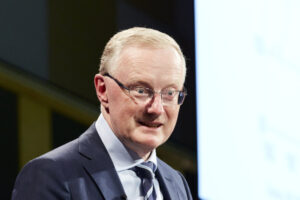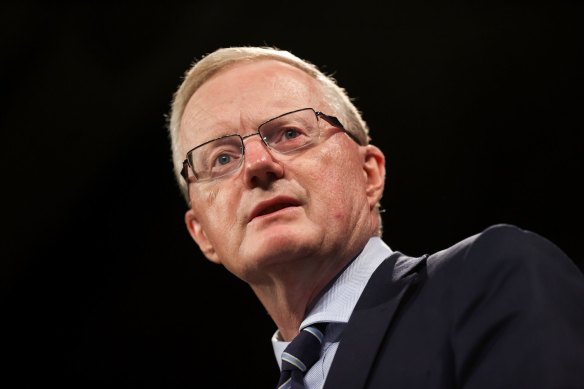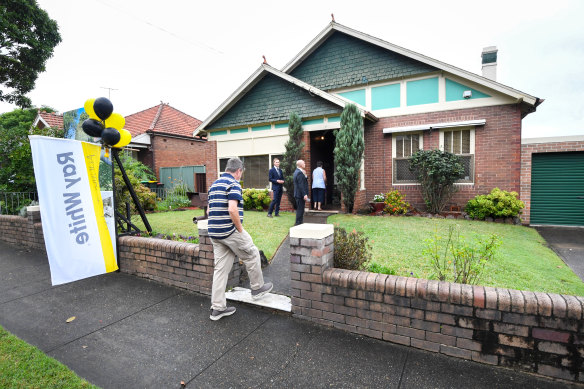How one rate pause inflated consumer sentiment

One pause in interest rates is all it took. After almost a year of deteriorating consumer confidence, pessimism experienced an abrupt U-turn when the Reserve Bank decided last week to take a breather on increasing rates.
Buckle up for the consumer confidence roller coaster.
The 9.4 per cent surge in sentiment, while encouraging for the retail sector, isn’t what the Reserve Bank’s doctor, Philip Lowe, would be hoping for in his fight against the inflation disease.
A surge in consumer sentiment is not what RBA boss Philip Lowe would be hoping for in the fight against inflation.Credit: Bloomberg
Part of this sentiment pivot can be ascribed to consumers’ booming confidence in the outlook for house prices. Confidence in rising house prices now sits close to the level seen last year before the RBA started raising interest rates.
At the start of this month, the national home values defied gravity and began moving up after a year of falling. The pause in rates in April has raised the possibility that house price gains will be sustained.
Higher house values feed into consumers’ feelings of wealth, and with them their overall confidence. And despite the lion’s share of economists predicting another leg down in house prices, this is a market that notoriously ignores the script.
One can only imagine what response consumers would have registered to the sentiment survey had the RBA stated its monetary policy tightening was complete.
To be clear, consumer confidence is still weak by historical measures, but the surge in the reading this month was extreme.
Maybe it was just the reprieve for borrowers who had been battered with 10 consecutive rate rises feeling they could come up for air.
The survey also found people were more confident about their short-term family finances and the purchase of a major household item.
Some would have been lured into a likely false hope that we had come to the end of rate rises. Only one-third of those surveyed for the Westpac Melbourne Institute Consumer Sentiment Index believed rates would rise by a further 1 percentage point. Last month that proportion was almost 45 per cent.
The smart money is betting on another rate rise next month, although some economists believe the RBA won’t raise rates again until June. Plus there is a school of thought predicting two more rate increases are in store before the central bank has completed the tightening cycle.
The most likely explanation for the turnaround in consumer sentiment is that the pause in April was a sign that the end is in sight, even if a bit more pain has to be endured before it is reached.
It certainly fits with the narrative that next year interest rates will come down – an outcome borrowers are holding out for.
Higher house values feed into consumers’ feelings of wealth and with them their overall confidence.
But if consumers are holding out for a return to the historically low but aberrant interest rates in 2021 and early 2022, they will be disappointed.
Meanwhile, even a boost in sentiment does not necessarily translate to consumer spending.
While consumer sentiment registered as particularly low for most of 2022, spending remained buoyant. During most of the past year there was clear decoupling of consumer sentiment and consumer spending.
Borrowers are holding out for an end to the rate-rising cycle.Credit: Peter Rae
Spending has held up relatively well since November, but there are clear signs of weakening in the statistics despite pockets of strong spending being recorded by some retailers.
Westpac senior economist Bill Evans warns that consumer spending through 2023 and the first half of 2024 will be weak.
The confidence levels are not euphoric, but they are at their highest level since June 2022 – a month after the start of the tightening cycle.
If the RBA does move next month to raise rates again, these confidence levels may be put to the test.
The Business Briefing newsletter delivers major stories, exclusive coverage and expert opinion. Sign up to get it every weekday morning.
Most Viewed in Business
From our partners
Source: Read Full Article


